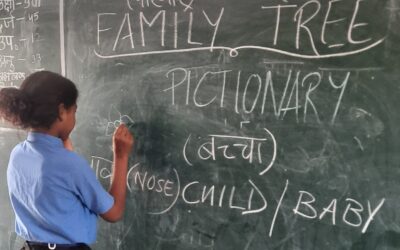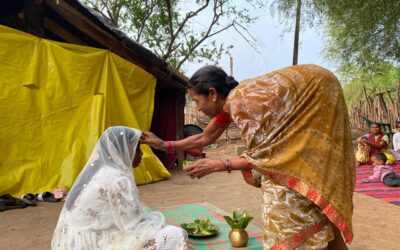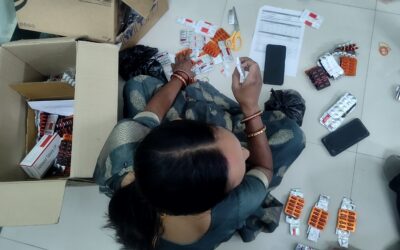Despite the visual appeal and novelty of the environment in Kalahandi, Odisha, during my field visit in the first week, the deeper complexities didn’t hit me in the beginning. However, after spending some time interacting with locals and taking help from my team members for translation (since I was unfamiliar with both Odiya and Kui languages), I began to grasp the subtle nuances and inherent intricacies of the people and the organization.
The Horror Encounter: Child Marriage And Early Pregnancy
While I had heard about child marriage and its legal consequences, this was my first time seeing it up close in-person and understanding the associated problems. The practice, along with early pregnancy is so common here that it shocked me. Most of the government laws which I thought would work because they are effective in the urban areas, don’t apply here because the local people are in favour of child marriage. Even if some of them witness it, they don’t report it to the authorised officials. This reality became evident to me during the time I spent on field and saw these incidents playing out in front of me.
The Incident
I was in Kerpai, a village in Kalahandi where indigenous communities live. I heard a doctor’s remark about a newborn infant weighing less than a kilogram. At first, I couldn’t grasp the gravity of the situation but within minutes, I noticed a young girl in the clinic who I had assumed to be a relative of the baby. That, however, was not the case. She was the mother of that newborn child. You can read more about the incident here, a detailed account of the incident written by my colleague Dr Surabhi.
Her Family
The adolescent girl, now a mother, was accompanied by her mother-in-law. But I couldn’t find the father of the child. After a few days, a young boy, hardly 20 years old came to the clinic. I couldn’t believe that he was the father. When asked about his absence during the birth, he casually said, “I had a cricket match to attend and hence, couldn’t be in the clinic with the mother and child.”
Reflections and Realizations
I was neither prepared to see such a young girl giving birth to a baby weighing less than a kilogram nor to see a young boy dismissing his role as a father. What could one expect from someone like him ? Upon contemplation, I realized that he is still a child, too young to understand his responsibilities or the essence of fatherhood. It was my mistake to expect more from him based on my preconceived notions.
But I still couldn’t gather my thoughts and these questions were bugging me a lot:
- Had the community failed the young girl and boy?
- Would the community also fail the child?
I believe that time will answer them. Within the next few days, I saw more adolescent girls with young children in their arms, and it made evident the prevalence of child marriage and early pregnancies in these villages. There is a desperate need for comprehensive awareness initiatives in the community.
The Hidden Complexities Of Kalahandi
The below verse mentions some of my observations during the visit:
A cluster of villages nestled among mountains, Over 100 kilometers away from the nearest town, With river flowing along the hilly terrain, And inhabitants largely indigenous people. They own cows, buffalos, sheep, lambs and hens. Primarily focusing on agriculture for their livelihood, Farming on the field during summer And cultivating on the mountains during winter, They call the mountains donger locally Fruits and green leaves Come from the mountains, And the market laid out once a week. On the surface, one might believe That they live a simple life, But on a deeper exploration It revels a lot of complexities With zero to less network connectivity, And with poor transportation facility, Having a meal consisting carbs mainly From rice and dal supplied by PDS, and ragi porridge. One might think that they can drink milk, But they believe it is for the calves, With the irony being, That they sacrifice the hen and lamb. With high number of child marriages and early pregnancy, With a poor public healthcare facility Only a few government schemes implemented successfully, And a high number of maternal deaths, plus several health issues. With people having to walk more than 3 kilometers In a hilly terrain filled with mud and gravel, With the number of schools increasing, But the quality of education remaining same. To an outsider, these are intolerable But for them this is life, To an outsider, the death of a close person is devastating But to them it’s a part of life. What can an outsider do When the people here want to live in the moment? What can an outsider do When he wants to learn and create a sustainable impact? Is there anything meaningful that I can do, And if so, how? Can it be done just by accepting the complexities, and completing the given tasks and activities?




Insightful article!!! Loved your poem.